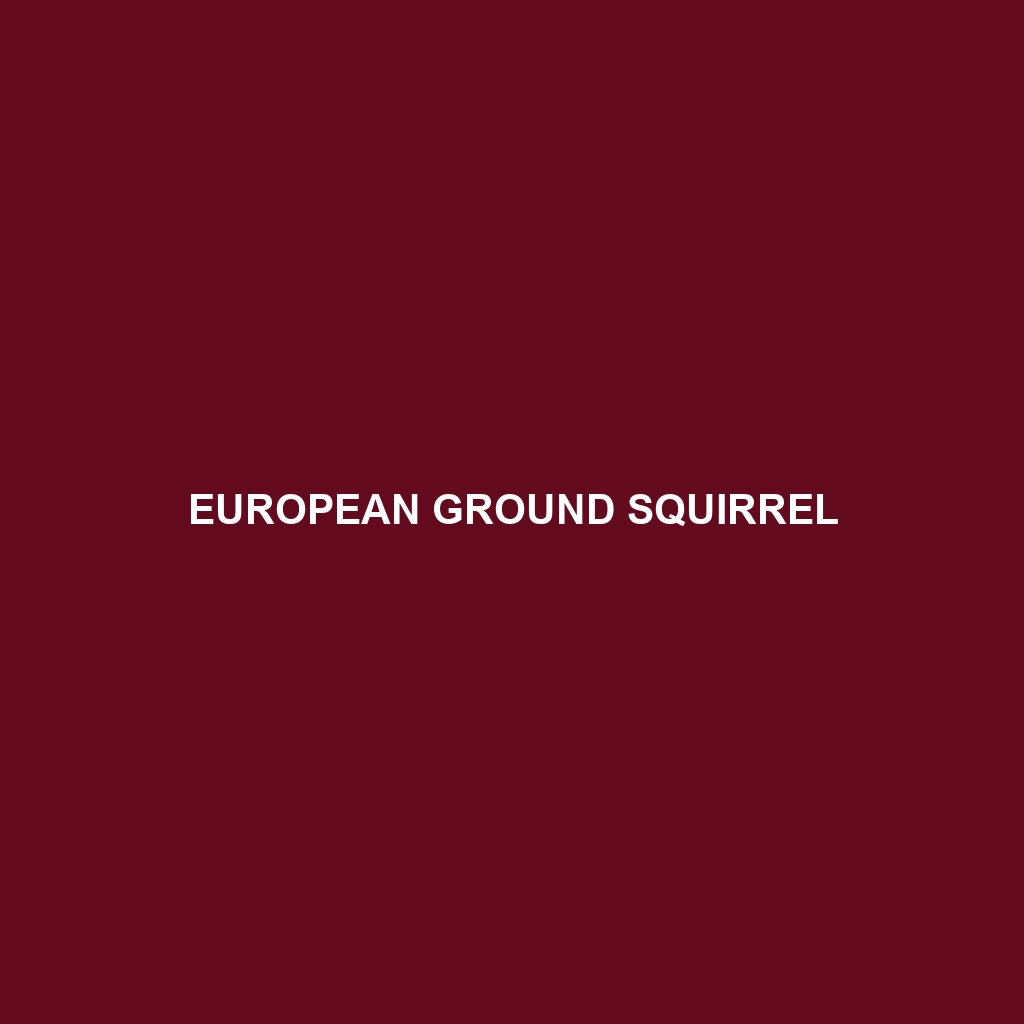European Ground Squirrel: A Comprehensive Species Description
Common Name: European Ground Squirrel
Scientific Name: Spermophilus citellus
Habitat: The European Ground Squirrel primarily inhabits grasslands, steppes, and agricultural areas across Central and Eastern Europe. Its range extends from countries like Hungary, Romania, and Bulgaria to parts of Western Europe, including Austria and Switzerland. This species prefers open, well-drained environments where it can easily dig burrows and find suitable food sources.
Physical Characteristics: The European Ground Squirrel is a medium-sized rodent, measuring about 20 to 30 centimeters in length, with a tail that adds an additional 5 to 10 centimeters. It has a robust body covered in a mix of brown and gray fur, which helps it blend into its natural habitat. Distinctive features include its small, rounded ears and a bushy tail that it often uses for communication and balance. The ground squirrel also possesses sharp claws for digging.
Behavior: Known for its social structure, the European Ground Squirrel is often found living in colonies. These social animals are diurnal, meaning they are active during the day, primarily foraging for food and interacting with other squirrels. They communicate through a variety of vocalizations and body language, with famous alarm calls that warn other squirrels of approaching predators. Their burrowing habits not only provide shelter but also create complex underground tunnel systems.
Diet: The diet of the European Ground Squirrel mainly consists of grasses, seeds, fruits, and various root vegetables. During the summer months, they also consume insects, particularly when protein is required for reproduction. This adaptable feeder often stores food in burrows to ensure a supply during harsher seasons. Understanding their feeding habits is essential for wildlife conservationists studying habitat impacts.
Reproduction: The breeding season for European Ground Squirrels typically occurs in late March to early April, coinciding with the warm weather and increased food availability. Females give birth to 2 to 8 offspring after a gestation period of about 28 days. Mating rituals include vocalizations and displays of aggression, while female ground squirrels are responsible for raising the young until weaning at around 6 weeks.
Conservation Status: Currently, the European Ground Squirrel is classified as ‘Vulnerable’ on the IUCN Red List due to habitat loss and fragmentation, primarily from agricultural expansion and urban development. Conservation efforts are essential to safeguard local populations and their habitats from further decline.
Interesting Facts: One intriguing characteristic of the European Ground Squirrel is its hibernation behavior. During the winter months, they enter a state of torpor, significantly slowing their metabolism to conserve energy. Additionally, they are known to use their burrows not only for shelter but also as a refuge from predators, highlighting their ingenuity and adaptability.
Role in Ecosystem: The European Ground Squirrel plays a critical role in its ecosystem by aerating the soil through its burrowing activities, which enhances nutrient mixing and promotes plant growth. Furthermore, they serve as a food source for various predators, including birds of prey, foxes, and snakes, thus contributing to the biodiversity and food web of their habitat.
